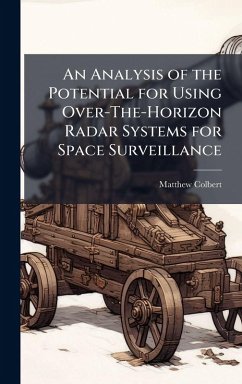
Increasing the Weaponization of Spaces
Versandkostenfrei!
Versandfertig in über 4 Wochen
29,99 €
inkl. MwSt.
Weitere Ausgaben:

PAYBACK Punkte
15 °P sammeln!
This paper addresses the issue of weaponization of space, or, more specifically, what would DoD like to do in/from space with weapons and what impedes DoD's ability to do this? Given the current environment, it appears that DoD should take prompt action to: (1) identify the U.S. and DoD policies which must be changed or developed to support weaponization of space; and (2) propose strategies for use of capabilities that result from weaponization of space. A key aspect of this effort will include developing a taxonomy of what it takes to do space control and force application from space, then id...
This paper addresses the issue of weaponization of space, or, more specifically, what would DoD like to do in/from space with weapons and what impedes DoD's ability to do this? Given the current environment, it appears that DoD should take prompt action to: (1) identify the U.S. and DoD policies which must be changed or developed to support weaponization of space; and (2) propose strategies for use of capabilities that result from weaponization of space. A key aspect of this effort will include developing a taxonomy of what it takes to do space control and force application from space, then identifying the specific impediments to each progressively more ambitious weaponization activity. The paper will briefly review current/emerging technologies that could be used to do space control and force application, primarily taking the position that technologies could be available to exploit space within the next 5-20 years if the U.S. decides to pursue their development. This work has been selected by scholars as being culturally important, and is part of the knowledge base of civilization as we know it. This work was reproduced from the original artifact, and remains as true to the original work as possible. Therefore, you will see the original copyright references, library stamps (as most of these works have been housed in our most important libraries around the world), and other notations in the work. This work is in the public domain in the United States of America, and possibly other nations. Within the United States, you may freely copy and distribute this work, as no entity (individual or corporate) has a copyright on the body of the work. As a reproduction of a historical artifact, this work may contain missing or blurred pages, poor pictures, errant marks, etc. Scholars believe, and we concur, that this work is important enough to be preserved, reproduced, and made generally available to the public. We appreciate your support of the preservation process, and thank you for being an important part of keeping this knowledge alive and relevant.












